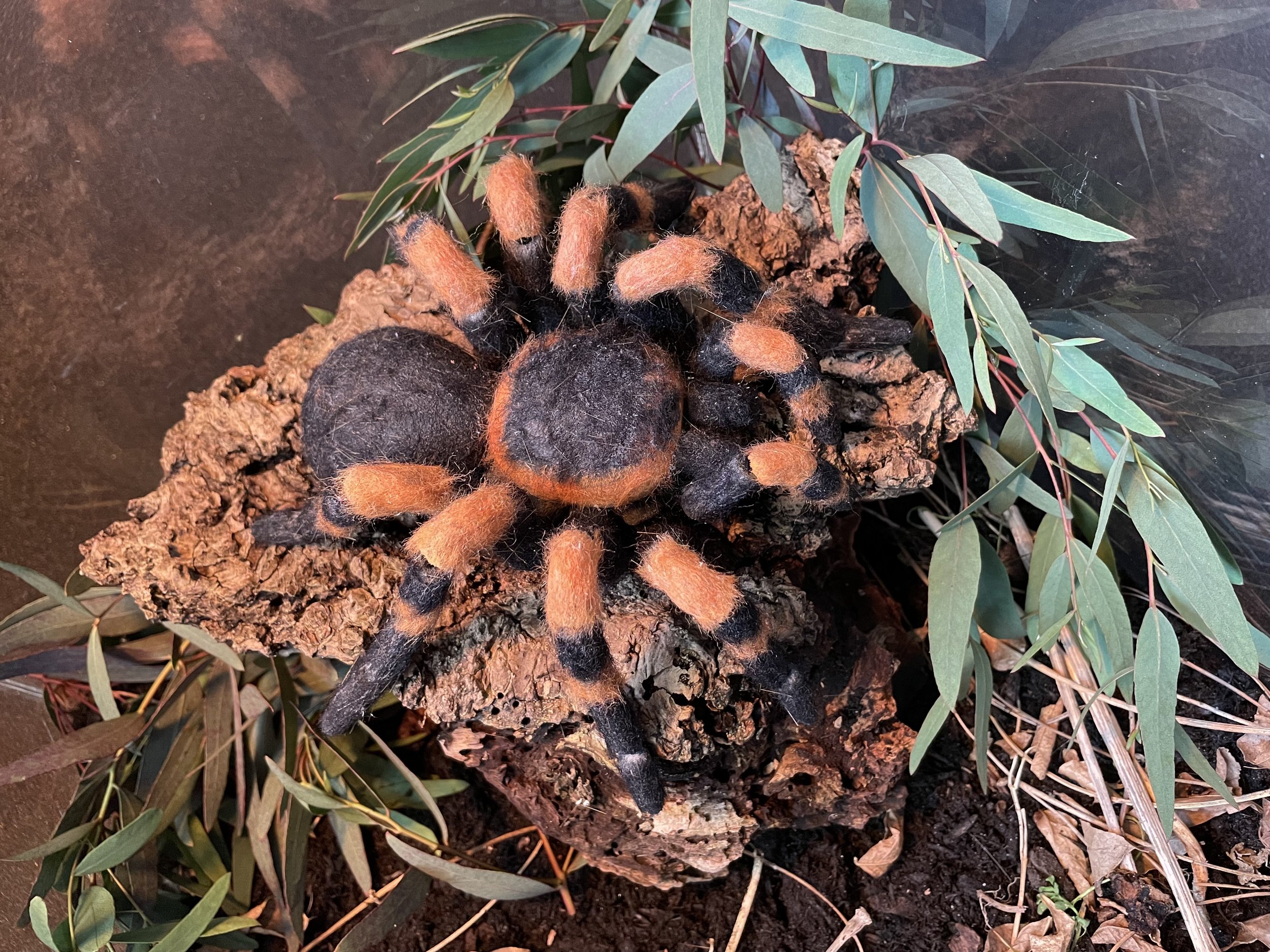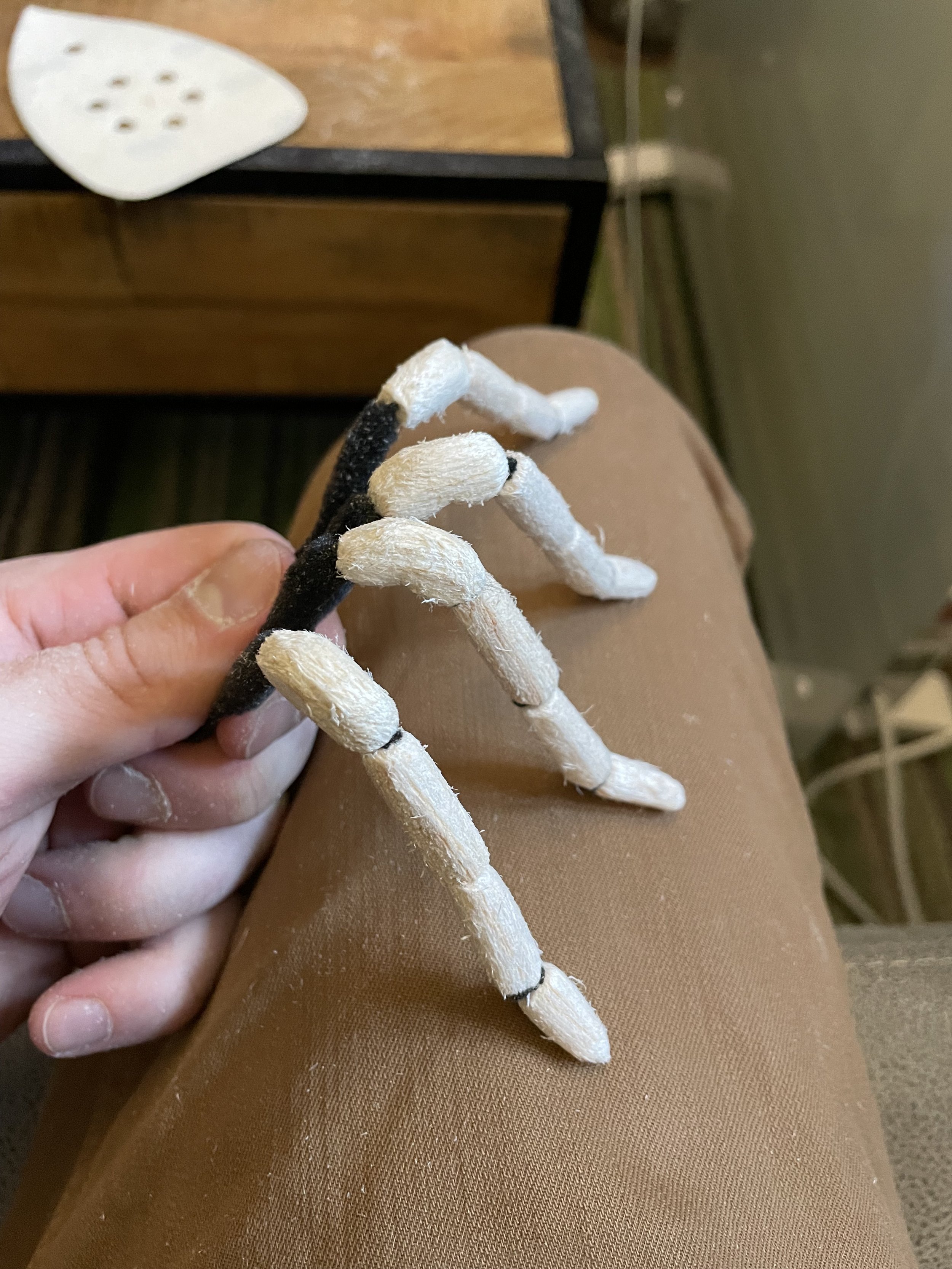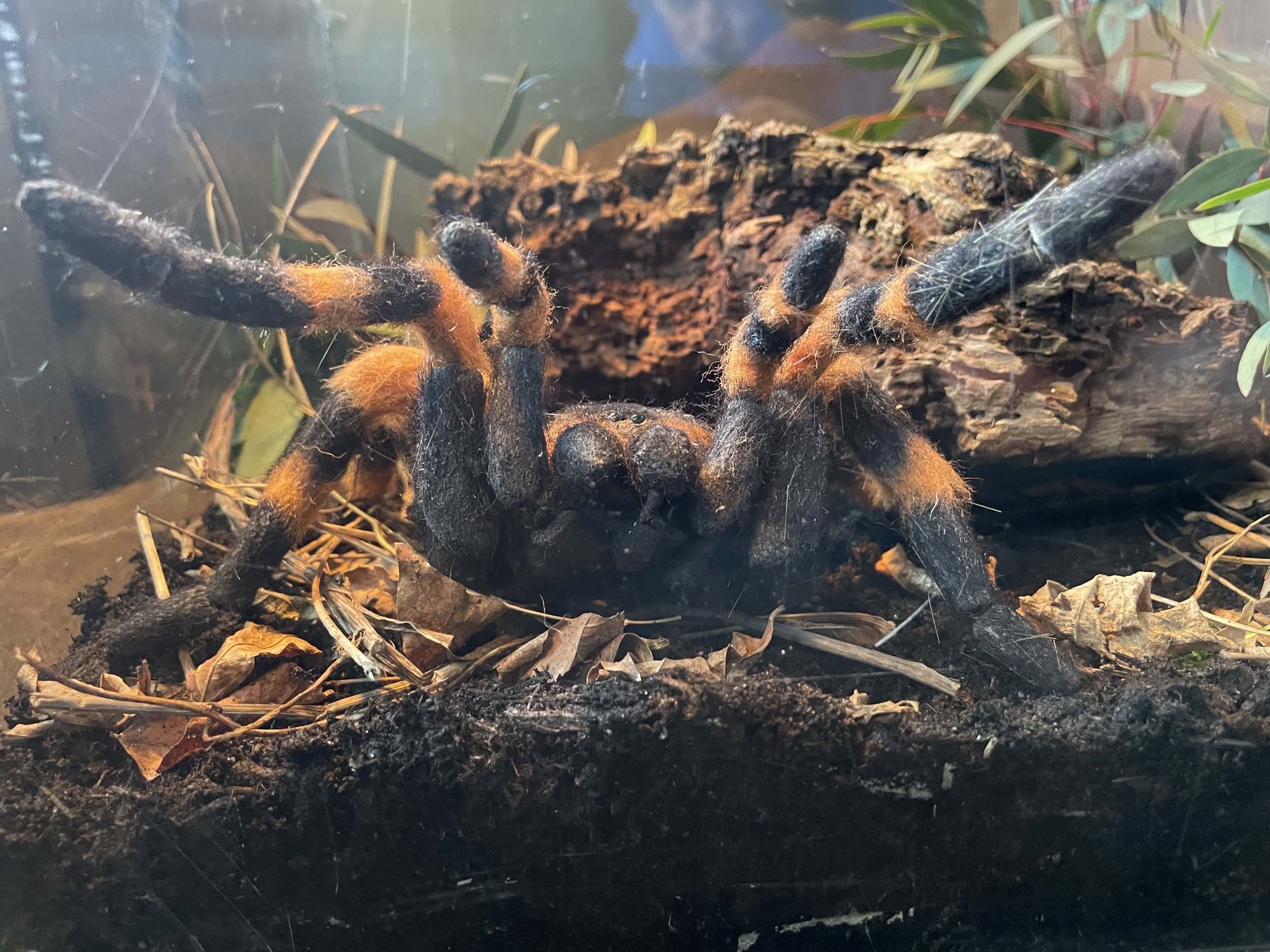
Mexican Red-Kneed Tarantula
Personal Project - to create a life-size, life-like, articulated & posable prop
Main Materials: Balsa Wood, Pipe Cleaners, Felting Wool, acrylic paint
Techniques: Sculpting/sanding, drilling, painting, texturing
This is the first toe that I made as a test piece.
It’s about 1/2 an inch long and when roughly sanded, Balsa wood starts to look like course hair, which closely resembles that of the tarantula. If the texture is inherent in the material, that helps to give it an organic look and potentially saves time later on, reducing the amount of additional texturing needed to achieve the desired effect.
Using reference images, the sections of each leg and fangs were cut, sanded, drilled and threaded onto black pipe cleaners. Layers of Balsa wood were glued together to create bigger pieces for the body parts, which were then laid on top of the legs for scale to complete the wooden skeleton.
Below, you can see the complete un-painted and painted skeleton. Watered-down acrylic paints were used to build up layers of colour. Balsa wood is very porous, so it soaks up the paint and if still wet, allows for colours to bleed, which was a useful property to take advantage of around the edge of the body and 3rd leg segments where the natural colouration of the tarantula goes from black to orange.
Once the skeleton was painted, the fibrous texture of the sanded Balsa wood had been flattened back down again. Re-sanding brought the texture back, but also removed the paint, so additional texture was needed.
Working from the toes backwards, felting wool was glued to the legs, then trimmed back ensuring to retain an overlap across the joints (as well as being more anatomically correct, this also hid the pipe cleaners). There was a fine balance here to get a realistic level of “hairyness”.
This process was repeated over the fangs and body, ensuring to pay attention to the direction of the hair growth according to reference images.
Bristles from a beige paint brush were cut and inserted into the wool once glued on. The bristles were longer than the length of the wool and stood out because they were a lighter colour, giving added detail and realism.
For final details, the horns from a toy triceratops were “donated” as fangs and glass-headed pins were inserted for eyes.
An old terrarium was dressed with soil, dead wood, leaf debris and fresh plant cuttings for a realistic environment to take the posed pictures below.
As you can see, the pipe cleaners allowed for full articulation at each joint to replicate some realistic poses.












